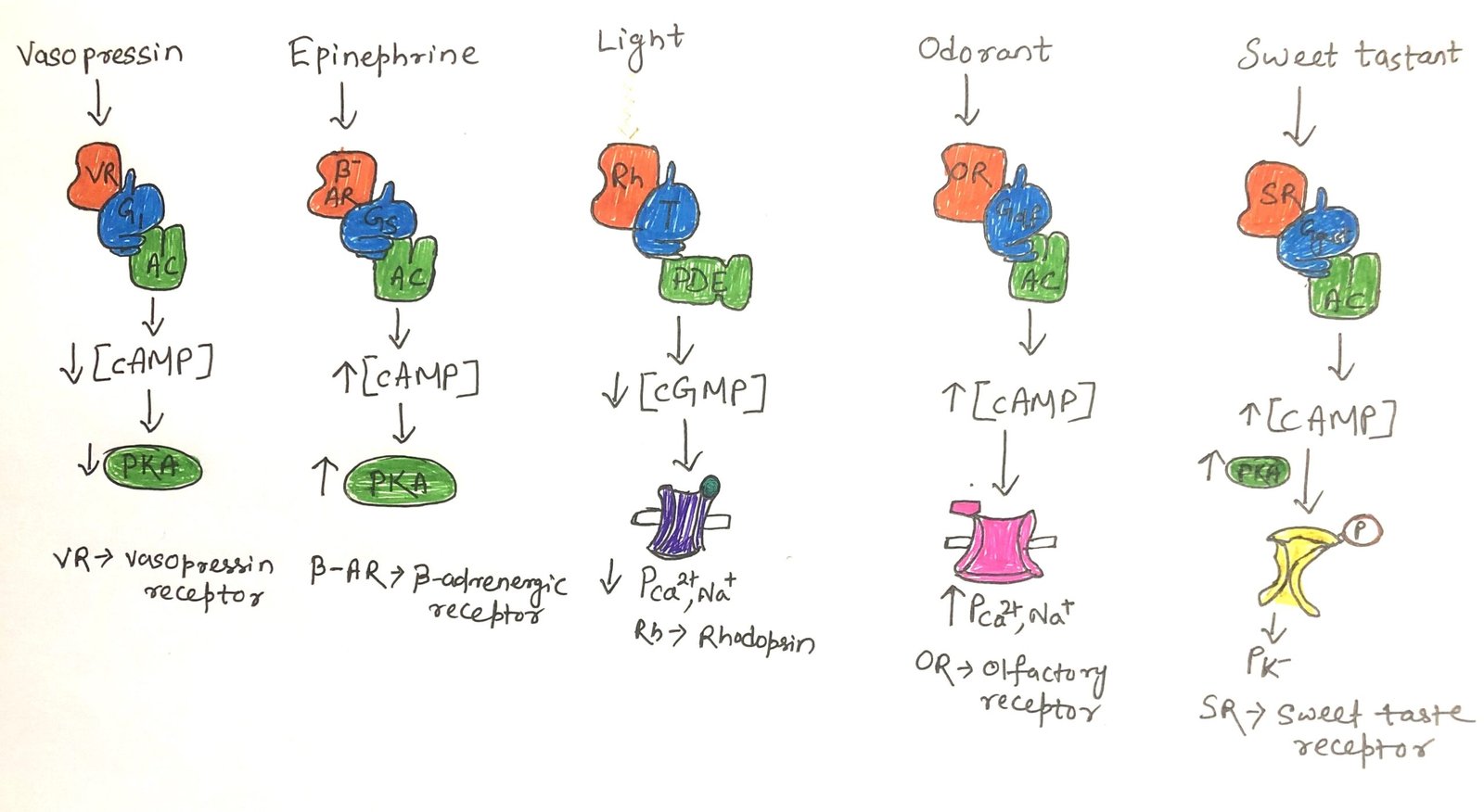Role of G Protein-Coupled Receptors in Vertebrate Olfaction and Gustation
In this article, I briefly describe the role of G protein-coupled receptors in vertebrate olfaction and gustation. G-Protein Coupled Receptors (GPCRs) These receptors act through a guanosine nucleotide-binding protein or G-protein family member. Signal transduction is defined through three essential components. The three essential components can be described as a plasma membrane receptor with seven … Read more >>


